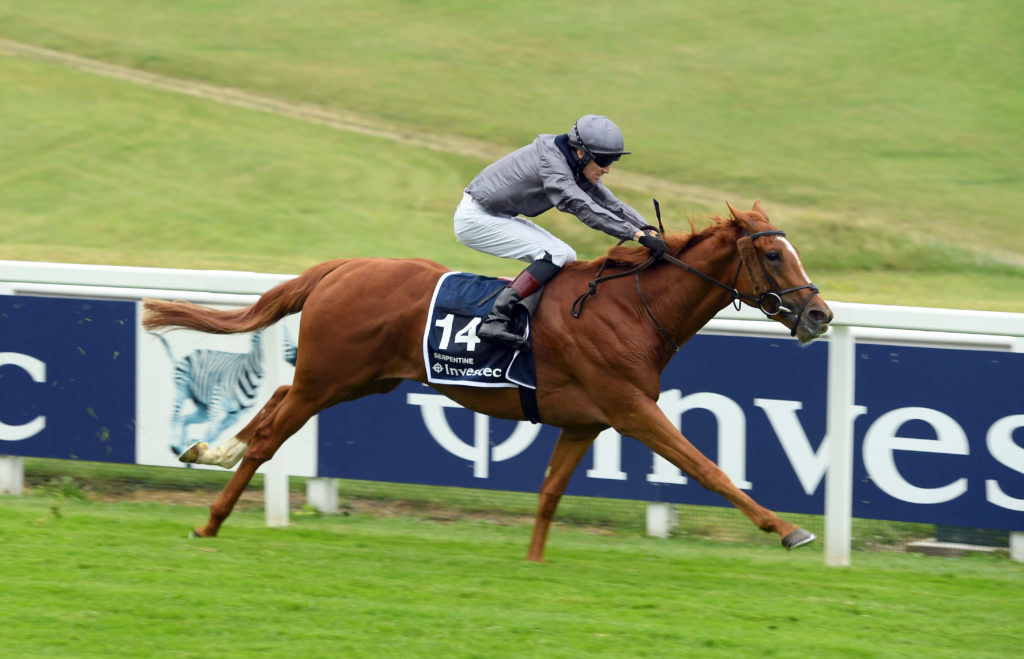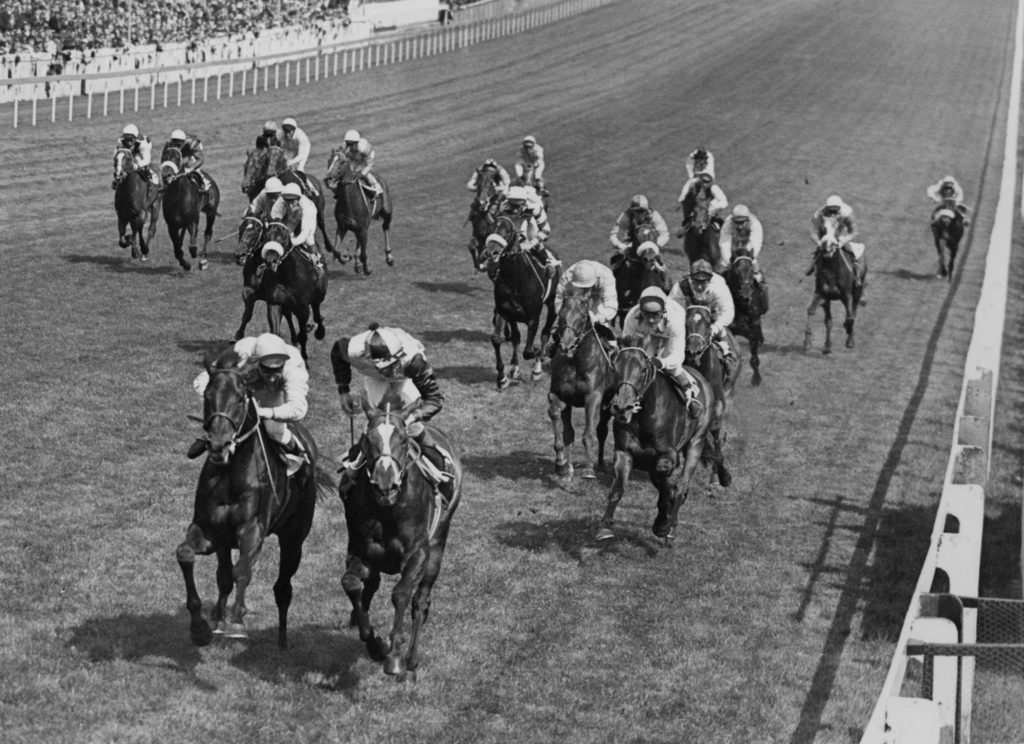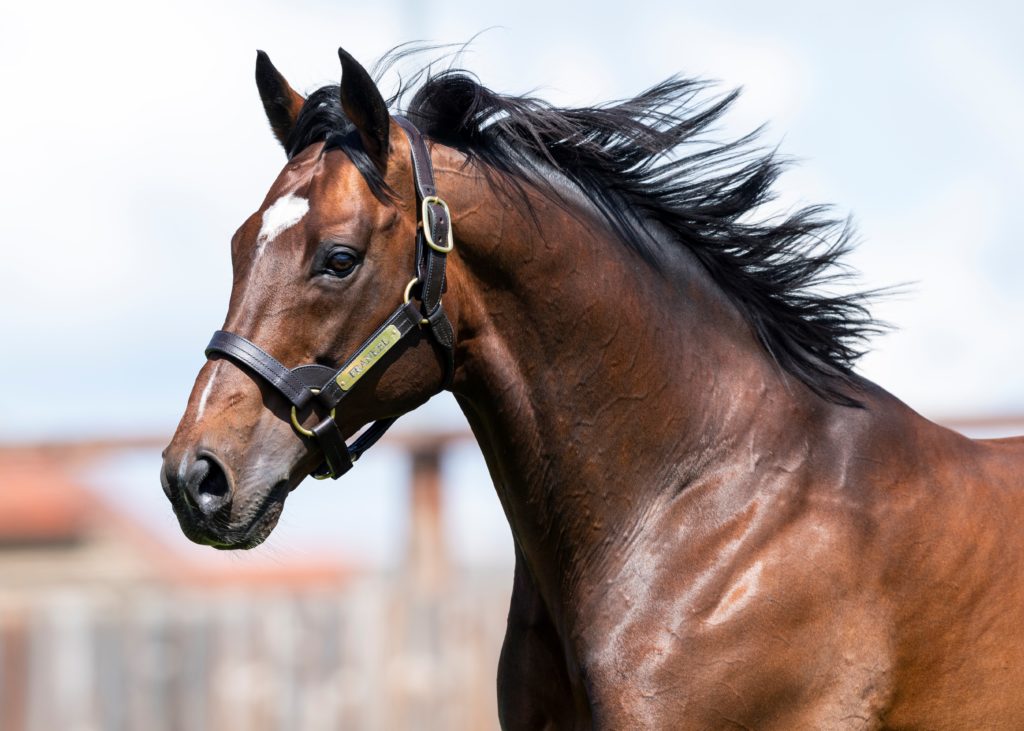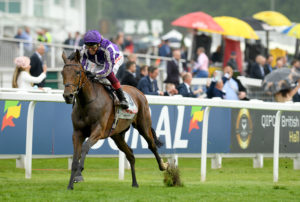As night turns into day, so it has become inevitable that the late Galileo will play a major role in the outcome to the Derby.
No stallion in living memory has dominated the Classic quite like the Coolmore colossus, who reigns as the leading sire over the race’s 242-year history by virtue of five winners. And although the plaudits for this year’s hero belong to Frankel as the sire of Adayar, the result remains a win for the Galileo legacy, just as it did via an earlier winning grandson, Masar.
In a snapshot of the breadth of Galileo’s rule, Adayar was one of six sons or grandsons of Galileo to take part in this year’s race, with one runner, Irish 2,000 Guineas winner Mac Swiney, even possessing two crosses of the stallion. Going back further, his line has been responsible for 25 of the 40 colts to have run in the past three renewals. As for his sire Sadler’s Wells, that figure increases to 31.
The 2019 running in particular represented something of a Galileo blanket, with all bar one of 13 runners a member of his tribe; the odd one out, Sir Dragonet, descended from Sadler’s Wells as a son Camelot.
Of the past ten winners, only Golden Horn and Harzand don’t descend from Sadler’s Wells or Galileo – and even then, it was Galileo’s half-brother Sea The Stars who supplied Harzand.
It is the kind of command that we have come to expect from Galileo, a brilliant Derby winner himself for Aidan O’Brien in 2001 who died earlier this month at the age of 23. It won’t be long until the 12-time champion sire hits the magic landmark of 100 Group 1 winners, and it is not beyond the realms of possibility that they will include another Derby winner to join the roll call of New Approach, Ruler Of The World, Australia, Anthony Van Dyck and Serpentine.

Serpentine is one of a number of Derby winners sired by Galileo
Of course, Galileo’s supremacy is a further continuation of the success enjoyed by his sire Sadler’s Wells. Responsible for two winners himself, including Galileo, his mantle as the dominant Classic middle-distance influence was ably assumed by an earlier son Montjeu, for whom a strong Derby record consisted of Motivator, Authorized, Pour Moi and Camelot. As such, 14 of the past 21 renewals have fallen to the Sadler’s Wells line.
Yet such domination hints at other issues bubbling beneath the surface. Sectors of today’s market find greater appeal in the production of fast two-year-olds and sprinters/milers than they do in the middle-distance horse, a development that has run in tandem with a decline in the number of European owner-breeders, several of whom historically took pleasure in campaigning stayers.
Against that, Galileo was a horse who imparts stamina and class with incredible regularity, as Sadler’s Wells and Montjeu did before him. Thus it stands to reason that when it came to an Epsom Classic, races which call upon reserves of class, speed, stamina and temperament, Galileo was going to hold a strong hand.
“Galileo imparts plenty of stamina along with all his other attributes,” says bloodstock agent James Delahooke.
“The essence of the Derby is stamina. Yes, speed is involved as is temperament. But when you look through the card of prospective runners nowadays, you can put a line through many of them over stamina. They need to get that final two furlongs. Adayar, I thought, got the trip manfully.
“I always find it interesting that in the Coolmore stallion yard they have that image of Tattenham Corner alongside Tesio’s Derby quote [noted Italian breeder Federico Tesio famously said that ‘the thoroughbred exists because its selection has depended, not on experts, technicians, or zoologists, but on a piece of wood: the winning post of the Epsom Derby’]. That criterion is certainly something that I agree with. And Coolmore have benefitted mightily by not being afraid to shoot for that holy grail.”
Changing landscape
It’s a very different scene to the 1990’s when the list of successful sires consisted of Rainbow Quest, Caerleon, Ahonoora, Dancing Brave, Chief’s Crown, Nijinsky, Mtoto, Silver Hawk, High Estate and Fairy King. While Northern Dancer was ever present, his influence did at least flow through the varied forms of Nijinsky (sire of Lammtarra and grandsire of Generous), Lyphard (grandsire of Commander In Chief), Danzig (grandsire of Erhaab) and Fairy King (sire of Oath).
Of course, by the very nature of the game, there will always be stallions who reign superior to others as the breed evolves.
In the case of the Derby, it has at one time or another been heavily influenced by the likes of Nearco, Fairway, Gainsborough, Blandford, Cyllene, Hurry On and St. Simon.
Cyllene and Blandford, for example, were represented by four Derby winners apiece during the first half of the 20th century; Cyllene, a son of Bona Vista foaled in 1895, sired Cicero (1905), Minoru (1909), Lemberg (1910) and the filly Tagalie (1912) while Blandford, a son of Swynford foaled in 1919, left behind Trigo (1929), Blenheim (1930; also sire of the 1936 winner Mahmoud), Windsor Lad (1931) and Bahram, the Triple Crown hero of 1932.
In turn, Cyllene was a grandson of Bend Or, whose male line was responsible for 11 winners between 1886 (Ormonde) and 1921 (Humorist).
Similarly, there were seven winning representatives of the St. Simon sire line between 1896, when his son Persimmon won in the colours of King Edward VII, then the Prince Of Wales, and 1914, won by Durbar.
Come the 1940s and the race was more or less the domain of Fairway, Gainsborough, Nearco and the French stallion Vatellor, the sires or grandsires of two winners apiece.
It can be argued that a turning point in the race’s history arrived in 1968 with the victory of Sir Ivor. Bred in Kentucky by Alice Chandler and trained by Vincent O’Brien, who had purchased him as a yearling on behalf of Raymond Guest, he opened the eyes of European investors to the value of North American stock, none more so than O’Brien and the Coolmore partners.

Roberto: a supreme source of stamina who later became the grandsire of Kris Kin – Photo: PA
A trip to Canada for O’Brien in the autumn of Sir Ivor’s three-year-old campaign resulted in the purchase of Nijinsky. With that colt carrying all before him in 1970 as the Triple Crown winner, interest in the potential of Northern Dancer was duly ignited; his stock were aggressively pursued and as history constantly reminds us, with breed- shaping results.
Subsequently came an era when American-breds regularly acquitted themselves well in the race. After all, a number of Europe’s better middle- distance horses, such as Nijinsky, Sir Ivor and Roberto, then stood in Kentucky.
Northern Dancer himself wound up as the sire of three winners – The Minstrel and Secreto followed in later years – and as for Nijinsky, he achieved the feat of siring an Epsom Derby winner, Shahrastani, in the same week that another son, Ferdinand, won the Kentucky version. The Roberto line could also be relied upon to impart plenty of stamina and duly popped up as the source of Benny The Dip (by Silver Hawk; 1997) and Kris Kin (by Kris S; 2003).
However, not one American-bred has won in the 18 years since Kris Kin. The grip of Sadler’s Wells has instead tightened alongside a smattering of success for Cape Cross, the sire of Sea The Stars and Golden Horn and grandsire of Harzand, and King’s Best, a relation to Galileo who sired Workforce.
So what does this say about the thoroughbred? Is the status quo a tribute to the superiority of Sadler’s Wells and Galileo or does it reflect shortcomings within today’s breed?
“The trouble is that few horses are bred to go 12 furlongs now,” says Delahooke. “The Americans have barely any at all and we are breeding fewer and fewer.
“It’s partly a result of the big book era. By the time that you find out that these horses might not be any good, there are already 300 or 400 of their foals on the ground. And then people start to breed from them.
“Stamina is not a dirty word. It is a magnificent achievement for a horse to maintain a gallop over 1m4f. In that respect I think what the TBA are doing to protect stayers [in 2015, they commenced a long-term project with the BHA to revitalise the race programme for staying horses] is marvellous. We’ve seen how well the GBB filly scheme has worked and I’m sure the staying scheme will start to kick in.”
Star role
Pat Downes is well placed to observe varying bloodstock trends in his role as manager of the Aga Khan’s Gilltown Stud, from where champion Sea The Stars has developed into one of Europe’s elite sires. Sea The Stars is capable of throwing smart two-year-olds and milers but is particularly effective as a source of middle-distance talent, as illustrated by the fact that his third crop contained the Aga Khan’s homebred Epsom and Irish Derby hero Harzand. And although a half-brother to Galileo, he is a grandson of Green Desert and thereby offers a route away from Sadler’s Wells.
“Personally, I think it [the lower market interest in middle-distance horses] is a concern going forward,” says Downes. “Right round the world, the most prestigious races are predominately varied distances from 1,600 metres up to Cup race distances.
“The emphasis has probably tipped too much towards speed breeding and while there is obviously a demand for breeding fast two and three-year-olds, it would be preferable I think if the speed/ distance ratio had more balance to it.
“However at the end of the day, commercial breeders are producing for a market that currently wants two-year- old speed and/or sprinters – this is an observation, not a criticism – but there probably needs to be a shift in mindset from all stakeholders from the breeding and racing industries.”
A brilliant champion himself for the Tsui family and trainer John Oxx, Sea The Stars’ stud record consists of 14 Group 1 winners and a reputation for producing tough, sound runners – Stradivarius being a notable example.
As such, he generally stands above any discrimination that the market may hold towards middle-distance influences.
“Undoubtedly the expectations were very high when Ling Tsui took the decision to retire her champion,” says Downes. “Being a half-brother to Galileo but also, after such an outstanding race career and having eventually retired 100% sound, there was no doubting what he could offer as a stallion. Even with all those positives, such is the nature of the thoroughbred breeding business, success was not guaranteed but as he did as a racehorse, he has excelled as a stallion.
“He looks set for another very good year and is currently the leading stallion in Europe by stakes winners to runners and also winners to runners.”

Frankel has now sired three British Classic winners – Photo: Bronwen Healy
Diversity key
This year’s Derby did at least yield a popular landmark success for Frankel. Adayar is his third British Classic winner after Anapurna and Logician, and given the current momentum behind the stallion and his firepower waiting in the wings, there is surely the strong likelihood of another Derby winner coming his way in the future.
With Galileo having recently succumbed to a debilitating foot issue, the question of a successor has never become more urgent. Frankel naturally fits into that mould while Australia and Teofilo are each well established sources of talented middle- distance talent. New Approach, of course, sired the 2018 winner Masar, himself an attractively priced option at £14,000 on Darley’s roster.
Camelot, meanwhile, remains a classy conduit of the Montjeu line.
Outside of the Sadler’s Wells clan, Sea The Stars fulfils a crucial role, even allowing for his close association to Galileo.
“I think we can see the traits that made Sea The Stars the racehorse he was in plenty of his progeny,” says Downes. “John Oxx commented many times how mentally tough Sea The Stars was, and the fact he could never really give him an easy time as he needed to work to keep him from becoming too fresh.
“We see many of Sea The Stars’ attributes in Stradivarius. Al Aasy, hopefully a Group 1 winner in waiting, is another – we have heard William Haggas say, that like his sire, he needs and thrives on work.”
Outside Sea The Stars, it wouldn’t be beyond the realms of imagination to envisage either Dubawi, Siyouni, Lope De Vega or Kingman throwing a Derby winner, although one suspects that they would require the right mare to do so. Perhaps a son of Deep Impact, himself a Group 1 winner over two miles in Japan where stamina is celebrated, is another answer – in that, Saxon Warrior and Study Of Man are two options.
No one would argue that diversity isn’t an important element to the breed yet the collection of Derby bloodlines have contracted remarkably in under two decades. The emergence of any alternatives would surely now be a welcome development.



